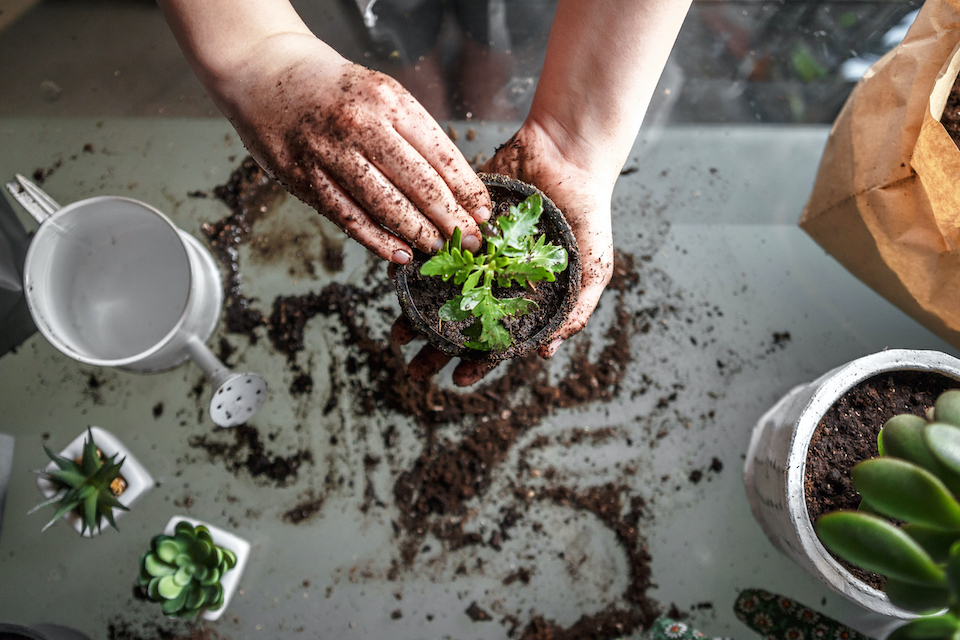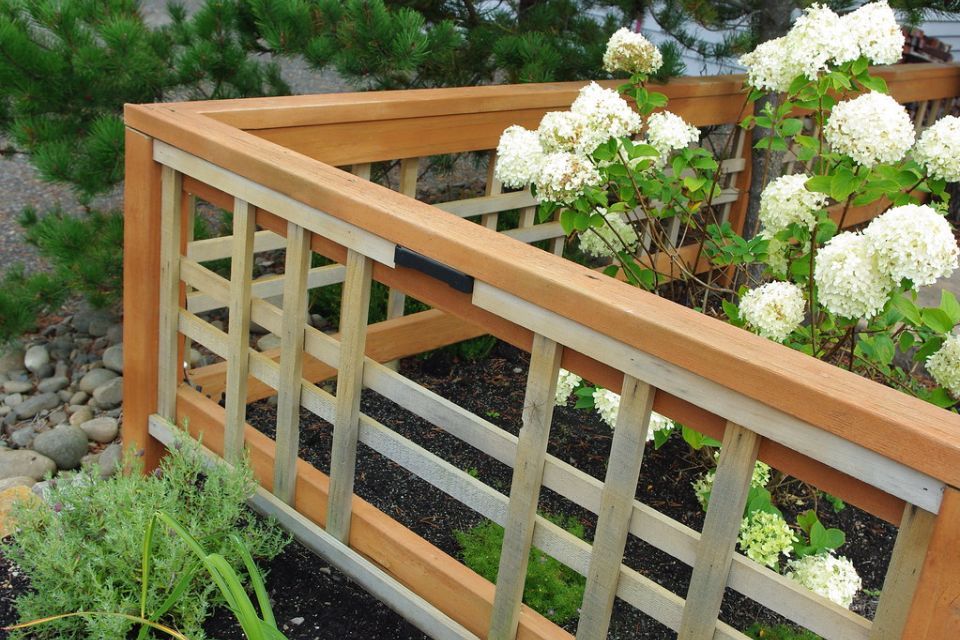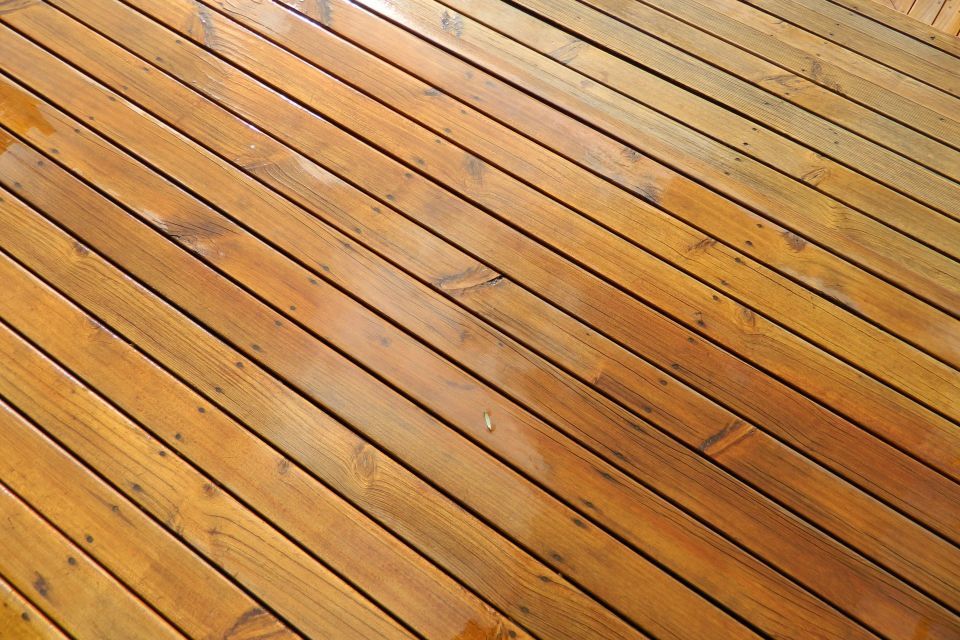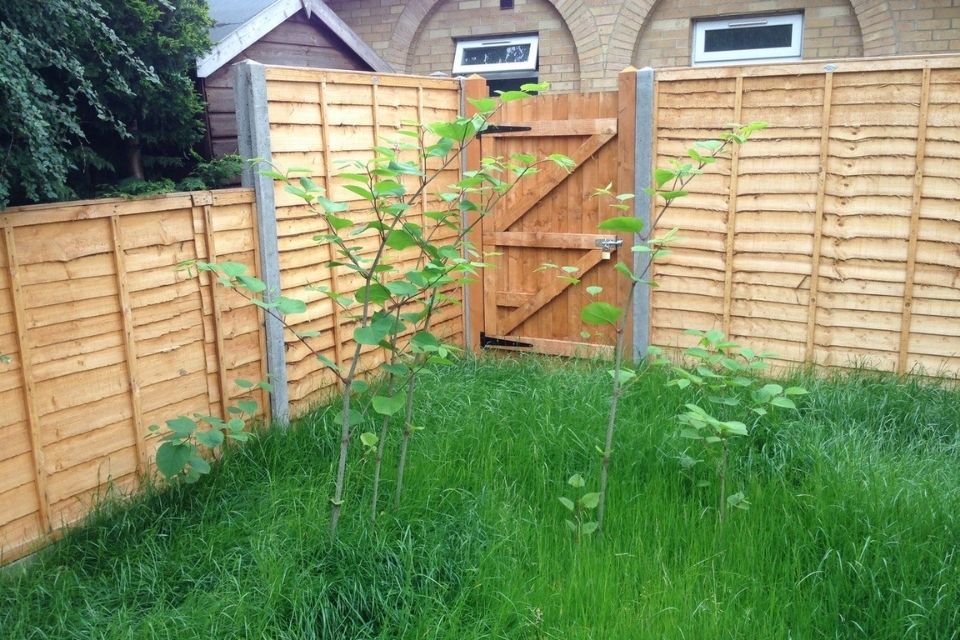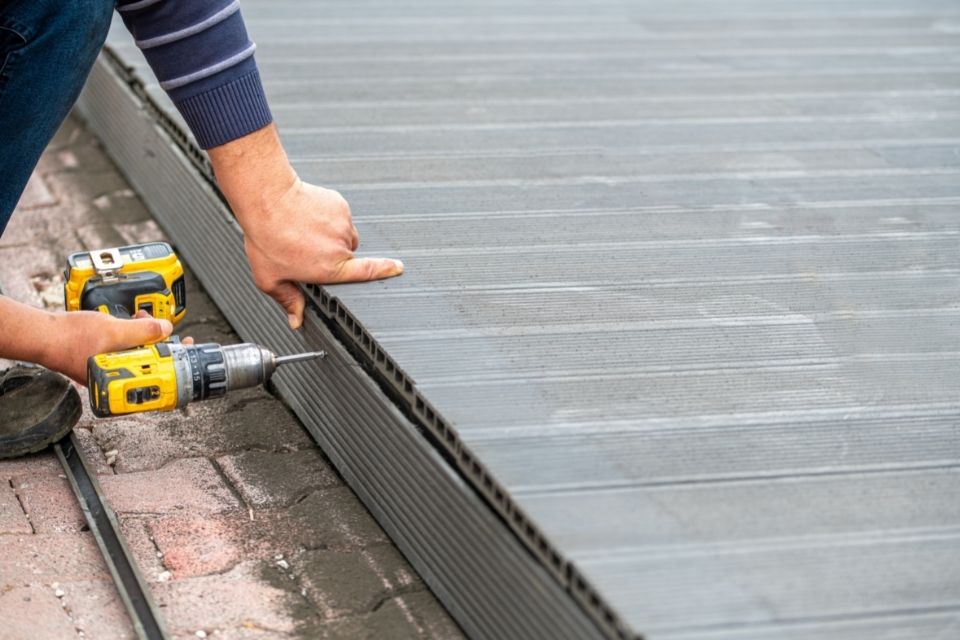How Much to Lay Artificial Grass?
Synthetic turf has become a popular choice for landscaping, providing a low-maintenance way to improve the look of outdoor areas.
On average, the cost of laying artificial grass ranges between £55 - £70 per square metre.
Artificial grass costs will depend on the type you choose and the size of your garden.
Let's look at the details...
Here we outline the price range for installing artificial grass, while looking at the average cost for various types of artificial grass, including polypropylene and nylon.
The biggest benefit of having artificial grass laid is that it's almost maintenance-free!
These price ranges are averages for the UK as a whole, and you should expect them to vary depending on the supplier you purchase from.
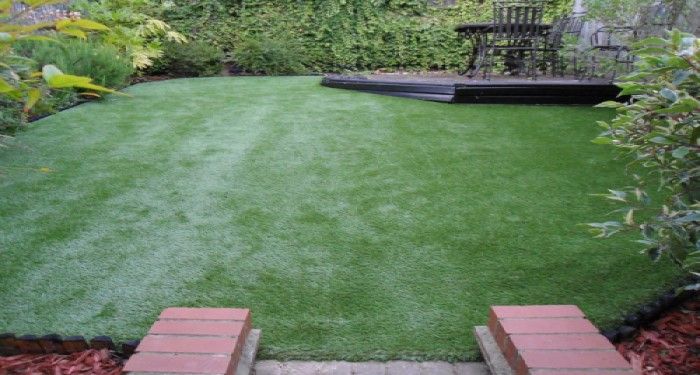
There are three types of artificial grass to choose from...
To install polypropylene artificial grass, the cost will come to around £55 to £60 per m². To have a polyethylene artificial grass installed will likely cost you between £55 and £65 per m².
Nylon artificial grass installation is priced at about £60 to £70 per m². Costs will vary depending on where in the UK you are situated.
Artificial Grass Price List
In this section, we’ll break down the costs associated with installing artificial grass. We’ll explore the labour and installation expenses involved in fitting various types and sizes of artificial grass when using a professional gardener or installer.
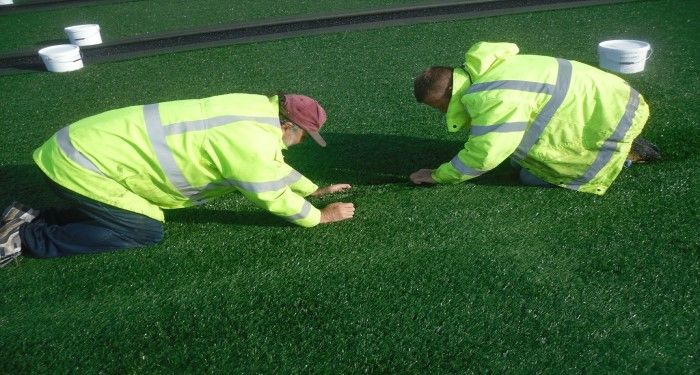
Generally, installation costs range from £55 to £75 per m². Labour charges typically fall between £300 and £500, although this can rise depending on the overall size and complexity of the project. The tables below outline estimated installation costs based on different types and dimensions of artificial grass.
10 m² Artificial Grass Cost Comparison
| Type of Grass | Size | Average Cost |
|---|---|---|
| Polypropylene | 10 m² | £550 to £650 |
| Polyethylene | 10 m² | £550 to £700 |
| Nylon | 10 m² | £600 to £700 |
25 m² Artificial Grass Cost Comparison
| Type of Grass | Size | Average Cost |
|---|---|---|
| Polypropylene | 25 m² | £1,400 to £1,500 |
| Polyethylene | 25 m² | £1,400 to £1,600 |
| Nylon | 25 m² | £1,500 to £1,750 |
50 m² Artificial Grass Cost Comparison
| Type of Grass | Size | Average Cost |
|---|---|---|
| Polypropylene | 50 m² | £2,500 to £3,000 |
| Polyethylene | 50 m² | £2,500 to £3,250 |
| Nylon | 50 m² | £2,500 to £3,500 |
100 m² Artificial Grass Cost Comparison
| Type of Grass | Size | Average Cost |
|---|---|---|
| Polypropylene | 100 m² | £4,000 to £5,500 |
| Polyethylene | 100 m² | £4,000 to £6,000 |
| Nylon | 100 m² | £4,500 to £6,500 |
Artificial Grass Supply Costs
In this section, we’ll explore the supply-only costs of different types of artificial grass. These figures represent the material prices per square metre, based on current retail ranges.
Actual prices can vary depending on factors such as:
- Quality
- Pile Height
- Density
- UV Protection Ratings
The most common artificial grass materials are Polypropylene, Polyethylene and Nylon. Each have its own price range and ideal places where they should be used.
Polypropylene Grass Supply Cost
Polypropylene is the most budget-friendly artificial grass type, making it a popular choice. It is generally priced between £10 and £15 per m²and is an economical choice for decorative or low-use areas.
Its lower cost comes from the fact that it has a lightweight structure and reduced durability compared to other types.
Polyethylene Grass Supply Cost
Polyethylene artificial grass offers a good balance between cost and quality, with prices ranging from £10 to £20 per m².
This type of material is more durable than polypropylene and has a softer, more natural feel. It is also UV-stable, making it a popular choice for gardens and areas with light to moderate foot traffic.
Nylon Grass Supply Cost
Nylon is the most expensive artificial grass type due to its superior strength and heat resistance. Supply costs range from £15 to £25 per m².
Nylon grass is great for high-traffic zones or commercial spaces. It has dense fibres which give great UV protection and is resilient to temperature changes.
Artificial grass is a material that is made of synthetic, man-made fibres that look like real grass, which stays green all year round.
Additional Artificial Grass Installation Costs
We will now look at the additional costs which you may incur whilst installing your artificial grass.
Ground Preparation Costs
Before you get your turf laid, there may be various things that need to be done to your ground to prepare. This could include:
- Excavation & Removal of Existing Turf: Removing natural grass, weeds, old turf or slabs
- Garden Levelling: Uneven surfaces may need to be levelled to prevent drainage issues.
- Adding Base Materials: A compacted base is essential and requires materials like crushed granite or limestone.
- Installing a Weed Membrane: To prevent weed growth through the turf.
Shock Pads or Foam Underlays
If you are laying artificial grass in your garden as part of a play area for children, you may want to consider adding shock pads or a foam Underlay.
These are a cushioning layer that is installed underneath the artificial grass to provide added impact absorption, comfort, and safety. It also makes it feel softer underfoot, giving it a more natural feel.
Another benefit of adding shock pads is that many have built-in drainage channels that help water flow through quickly, so it reduces puddles from forming, which maintains its usability after heavy rain.
Landscape Gardener
To finish the look of your new lawn and surrounding area, you may want to seek the help of a landscape gardener. They could help with a variety of jobs, including:
- Adding edging around the lawn, such as a stone border or concrete curbing
- Install decking to help define further usable areas of the garden
- Surround it with natural plants, shrubs, and trees to give a more realistic and balanced look
Waste Removal
When doing any work in your garden, the will be an amount of waste removal required. This may be included in your quote, but if not, it is another factor you will need to consider.
There are specific companies that offer garden waste removal and this will be priced dependent on what you are getting rid of and how heavy it is. Alternatively, you could hire a skip if your lawn installation is part of a bigger project.
Artificial Grass Fitting Timescales
We will now provide a timeframe of how long it should take for artificial grass to be installed.
As shown in the table below, installing artificial grass in an average garden of about 100 square metres will take about 3-4 days. For smaller gardens, it may take between 1 and 3 days, while for large gardens it can take anywhere from 4 days to a week.
| Size of Garden | Duration to Install |
|---|---|
| 10 square metres | 1 day |
| 25 square metres | 1 day |
| 50 square metres | 1-2 days |
| 75 square metres | 2-3 days |
| 100 square metres | 3-4 days |
| 150 square metres | 4-5 days |
| 200 square metres | 5-7 days |
The duration will vary depending on the size of the garden, type of artificial grass and other factors such as how accessible your garden is.
Types of Artificial Grass
Let's now look at the different types of artificial grass in further detail. We will look at the average labour price for each type, what each type of artificial grass is, when it should be used as well as list the pros and cons of each type.
Polypropylene Grass Cost
This type of artificial grass is made from polypropylene, which is a thermoplastic polymer. This type tends to be the cheapest. In terms of the labour costs involved with having polypropylene artificial grass installed, the labour cost will come to about £300 to £500 for a 10 square metre installation.
Since this artificial grass type is not as durable as polyethylene or nylon, it is most suited for use in small spots rather than to cover large garden spaces.
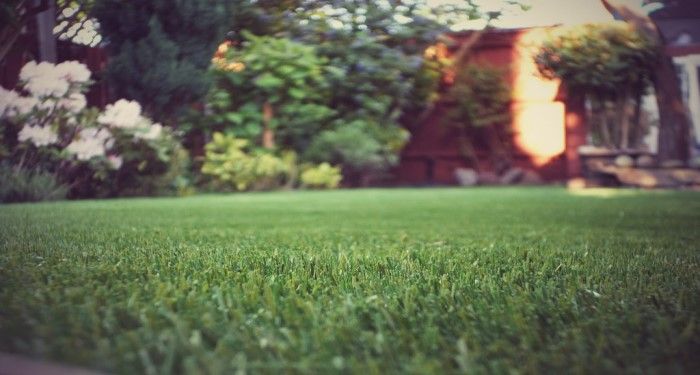
Pros
- Cheaper than other types of artificial grass.
- Ideal for filling in small spots of a lawn.
Cons
- Unsuitable for covering a full garden space.
- The least durable option.
Polyethylene Grass Cost
Polyethylene is an artificial grass type that is quite convincing and is still cheaper than nylon, although it is more expensive than polypropylene. Polyethylene is a common, linear plastic. This type of artificial grass will likely involve labour costs of about £300 to £550.
It’s perfect to use for covering your garden so long as you aren’t expecting excessive wear to be imposed on the grass, such as from children, animals or/and continuous physical activity.
Pros
- Not as expensive as nylon artificial grass.
- More durable than polypropylene.
- Can be used to cover a full garden in many circumstances.
Cons
- Not ideal for a garden that experiences heavy foot-traffic.
- Less durable in comparison to nylon artificial grass.
Nylon Grass Cost
Nylon artificial grass is the strongest and most durable type. Nylon is a family of synthetic polymers. The blades of this type of artificial grass are particularly strong and stiff. The labour costs involved in the installation of nylon artificial grass will likely come to about £400 to £600.
Nylon is ideal for covering a full garden, especially those which are susceptible to wear and tear from heavy foot-traffic.
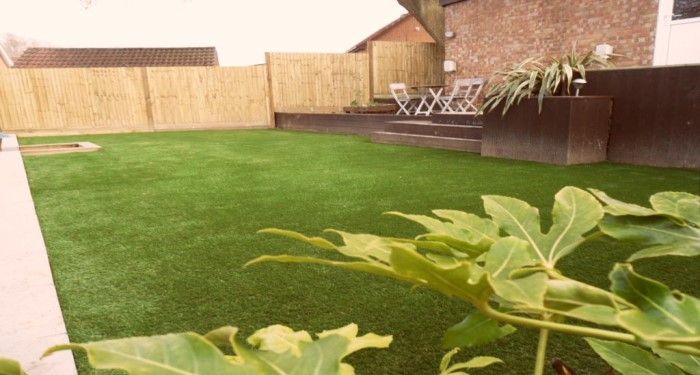
Pros
- Suitable for covering large gardens, including those with plenty of foot-traffic.
- Strong and durable.
Cons
- Most costly option.
Artificial Grass Maintenance Costs
Over time, your artificial grass may need repairs and maintenance.
Some of the best ways to maintain your artificial grass is by keeping it clean and brushing it. It will likely cost you between £15 and £30 to buy an appropriate brush.
Problems you may face with artificial grass include:
- Being too loose due to an incorrect fitting
- Small rips & tears
- Burn marks from sparks or embers from a barbecue
- Chemical exposure damage
In such scenarios, repairs may be necessary. Repairs may cost between £20 - £110 per hour, depending on how big an area needs to be repaired.
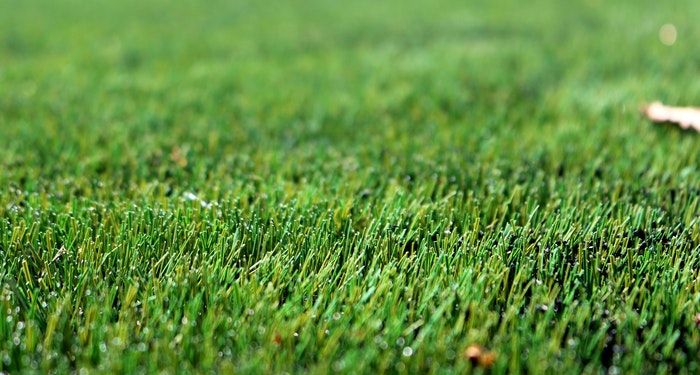
The total price for repairs and maintenance may vary depending on the type of grass in question, the size of the area, how accessible your garden is and where exactly in the UK you’re situated. Of course, this does not apply to all expenses, such as purchasing an artificial grass brush.
How Much Does Removing Artificial Grass Cost?
The removal of artificial grass costs per square metre will likely come to about £10 to £20. For a 25 m² garden, the labour costs will come to about £300 to £500. Waste removal will set you back around £100 to £200.
Once more, these prices may vary depending on factors such as where in the UK you live and how accessible your garden is.
FAQs
Q: How thick is artificial grass?
A: Most artificial grass will have a thickness between an inch and 1.5 inches, which translates to about 25mm to 38mm. This range offers a realistic look and feel, closely resembling natural grass.
Thinner turf (around 1 inch) is often used for areas like balconies, patios, where a short, neat appearance is wanted.
Thicker grass (closer to 1.5 inches) provides a softer, more luxurious feel, making it ideal for lawns, play areas, or places where comfort underfoot is important.
Q: What do you put under artificial grass?
A: It is best to place compacted sharp sand beneath artificial grass, as it provides a stable and level base. Sharp sand gives good drainage and helps prevent the turf from shifting over time.
For best results, the sand layer is usually compacted to create a firm surface before laying the grass. In many installations, a sub-base of crushed stone or Type 1 MOT is first added and compacted, followed by a layer of sharp sand to fine-tune the surface.
A weed membrane is also often placed underneath to prevent weed growth through the artificial grass.
Q: What is the best artificial grass?
A: Nylon is the strongest and most durable type of artificial grass, making it ideal for high-traffic areas or locations exposed to intense heat and heavy use.
However, the "best" artificial grass depends on your specific needs. For example, polyethylene grass is softer and more realistic in appearance. Polypropylene is a more budget-friendly option but less durable.
In many cases, a blend of nylon and polyethylene offers a good balance between durability and comfort.
Q: What sand do I put on top of artificial grass?
A: Silica sand is arguably the best type of sand to add on top of artificial grass. It is popular because it helps to weigh down the grass, keeping it in place and preventing wrinkles or movement.
Silica sand also supports the grass blades, helping them stay upright for a more natural look and can help improve drainage.
Q: How long does artificial grass last?
A: Artificial grass could last anywhere from 10-25 years. Its life duration may fall before or after this range, depending on how well it is looked after. Regular maintenance can help prolong the lifespan of your artificial grass fitting.



